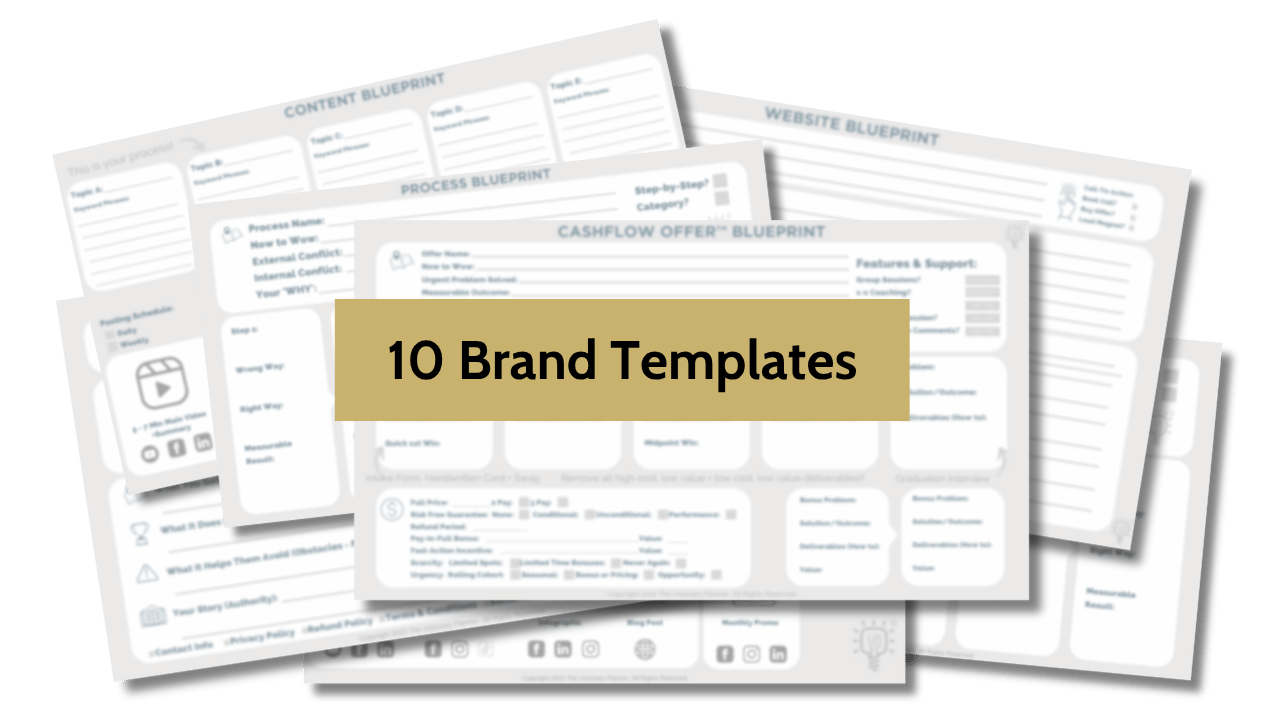7 Steps To Build A Profitable Sales Funnel & Website
Mar 05, 2019
Welcome to Part 2 in a trilogy of articles on how to create a Brand that lets you P.L.A.Y. In this article you're going to learn how to plan out your Brand’s assets, such as website, social media channels and marketing funnel.
P.L.A.Y. lets you:
- Create Passive Income so you can make money with minimal effort.
- Enjoy the Lifestyle your Brand’s profits provide.
- Build your Authority so you can leave your mark in the world.
- Do what You’re really passionate about so you feel fulfilled every day.
If you’re wanting to create a Brand around yourself, a creative Vision you have or your expertise, you’re going to love what you’re about to discover…
Now, before we venture forth, let me introduce myself…
My name is Mike L. Murphy and I’m the co-creator of the Visionary Planner. I'll be your guide through the treacherous world of getting your business online, and creating a gorgeous website that helps sell your stuff, and builds your marketing list.
You can find out more about me by watching this video below:
Recap of Part 1
In Part 1 you learned that the best Brands all have one thing in common… They create an amazing Audience Experience. This experience makes interacting with a Brand entertaining, educational and engaging for its Audience.
In order to see Audience Experience principles in action we examined Disneyland*. Disneyland was personally supervised by Walt Disney (a true Visionary) so that every aspect of creating an unforgettable Audience Experience was carefully planned out.
By examining Disneyland we can start to see how to apply those philosophies to an online Brand, or at least the online component of an offline Brand.
In Part 1 you also learned about The Visionary Loop. This is a series of 4 phases successful Visionaries must follow if they want to find success.
If you haven’t already, check out this short Visionary Loop video so you can be clear on the core ideas.
Part 1 of this article trilogy discussed the 8 ‘blocks’ that Visionaries must complete in the Visualize and Research & Study phases of the Visionary Loop.
In this article, we’ll discuss parts 9-14 that happen within the third Phase of the Visionary Loop - Produce. This is where you produce your website and marketing using industry best practices and the easiest tech.
You’ll also learn:
- What a Destination Article is (like this one) and why you need them.
- The best types of Free Treats and how to use them to grow your Audience.
- What the best ‘attractions’ you can put inside your Audience Path (also known as a funnel) are and why they’ll make your Audience happy.
- What elements it takes to create a Visionary Site you’re not embarrassed by.
- What to look for in Audience Path software.
3 Parts to this Article Trilogy
If you want to skip to the other parts, click the link below:
- Part 1 - How to plan your Brand
- Part 2 - How to plan your Website
- Part 3 - How to plan your Social Media
Visionary Definitions
If you’re not already familiar with our Visionary Planner definitions, here are some key ones you should know:
Brand:
A set of expectations, memories, Stories and relationships that, taken together, account for an Audience’s decision to choose one product or service over another.
A great Brand should deliver a clear message, provide credibility, create an emotional bond, motivate an Audience to buy, and create Guest loyalty.
Audience:
The assembled spectators, listeners or readers who are interested in the topic of a Brand.
Guest:
An Audience Member who purchases any of a Brand’s Treasures. In the Visionary Planner we call customers Guests in order to emphasize the fact that a Visionary should treat all Treasure Buyers as most honored Guests.
Treasure:
A valuable product or service that the Audience of a Brand purchases.
Visionary:
A person with original ideas about what the future will or could be like.
Visionary Loop Phase 3 - Produce
Ready to dive into the third Phase of the Visionary Loop, Produce?
This phase can only happen if you’ve properly Visualized what you want to build, and then Research & Study how to do that. In our Visionary Planner trainings we spend a lot of time Mapping out a Brand and then verifying the data we found.
This is important because most business owners want to dive right in and start creating the tangible and sexy assets of a Brand…the Brand Logo, the Visionary Site and the Social Media Blurbs and Episodes.
But none of that will do you any good if it’s not based off a well planned out strategy. You’ll end up like I did after I produced my first Brand. I had created a big old mess where I wasn’t clear on how all the pieces fit together. Even worse, I ended up giving up because I couldn’t manage this mess…
So, if you’re planning to start producing your Brand, make sure you only do so once you have a crystal clear Vision and the knowledge on how to create it.
That brings up to Phase 3 - Produce.
The Produce Phase consists of the following 7 ‘Blocks’. We call these Blocks because, just like Lego Bricks, you use them to build your Brand.
- Destination Articles
- Free Treats
- Treasure #1
- Social Media Channels
- Path Assets
- Path Tools
- Visionary Site
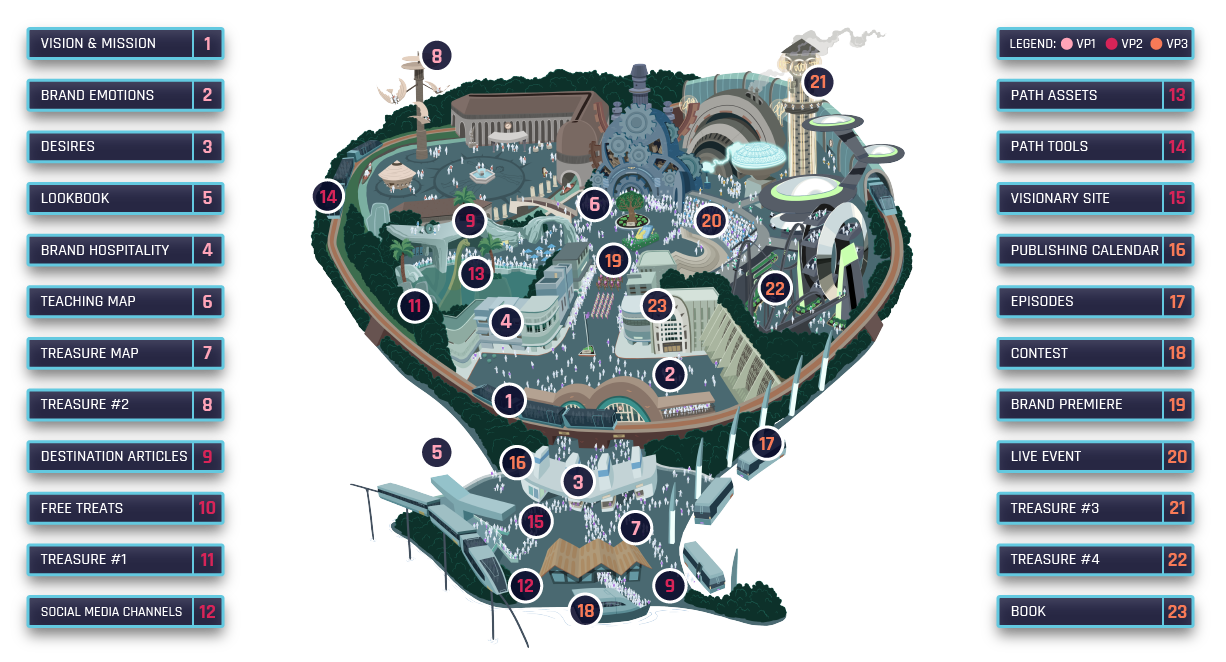
As you can see from the image above, each Block corresponds to a specific part of a Theme Park. Because online Brands can be hard to understand (because they feature concepts that you can’t see or touch) we are presenting these ideas in relation to something you can see and touch…a theme park!
Let’s find out what each Block is!
1. Destination Articles
An educational and entertaining article on a Brand’s Site, specific to one of its Audience’s Desires, that entices them to visit their WordPress Site and discover more about the Brand.
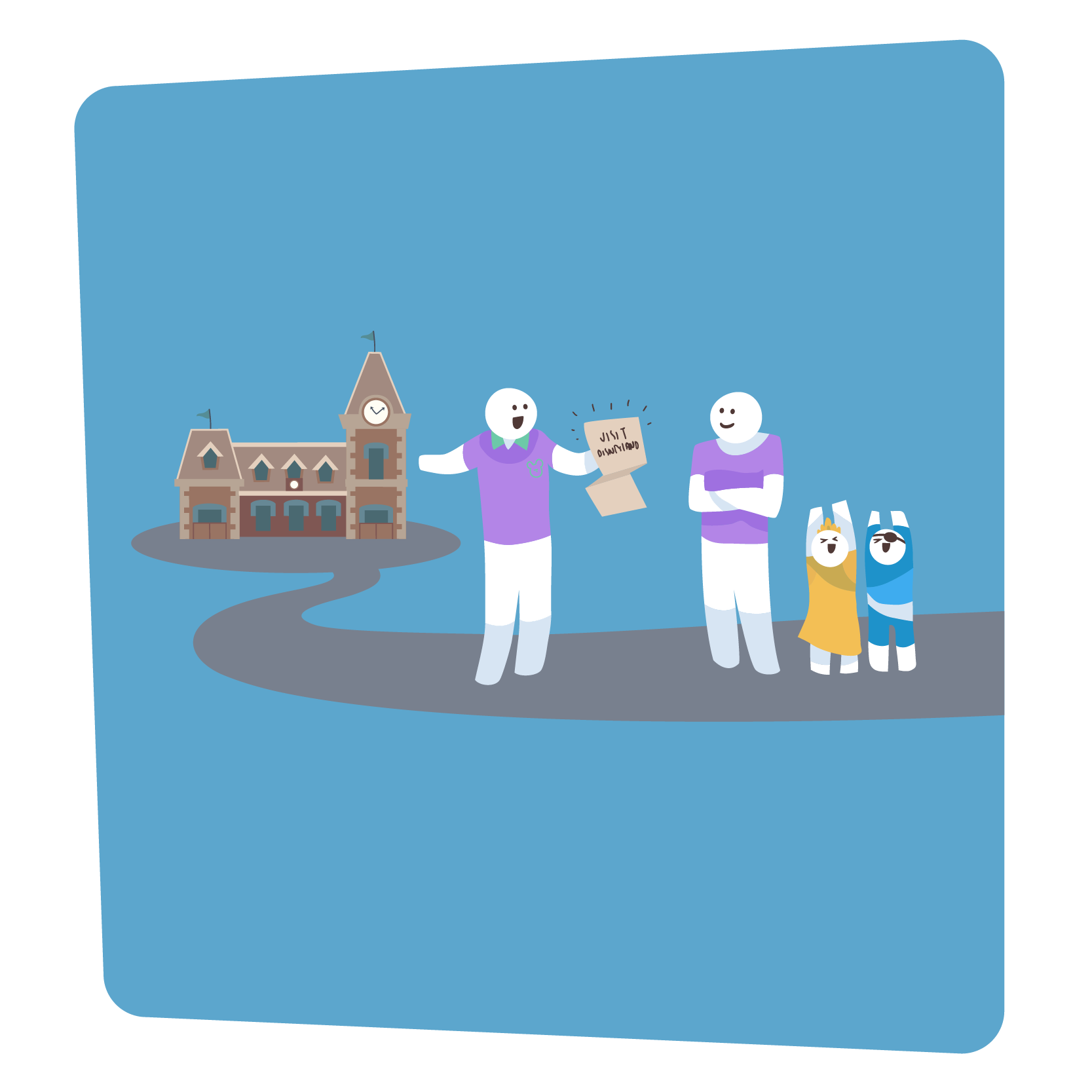 Disneyland has brochures and TV commercials that get an Audience interested in visiting the Park. These materials Educate and Entertain the Audience about all the goodness that awaits if they head on over to Disneyland. They paint a very clear picture of what type of Experience the Audience can look forward to.
Disneyland has brochures and TV commercials that get an Audience interested in visiting the Park. These materials Educate and Entertain the Audience about all the goodness that awaits if they head on over to Disneyland. They paint a very clear picture of what type of Experience the Audience can look forward to.
This ‘preview’ of the Audience Experience let’s them envision how much fun they’re going to have. Because they’re seeing what the park is like, they can start to envision themselves there having the Experiences they just heard about.
So what is the equivalent of this in an online Brand?
Every Brand should have some content that gets their Audience excited!
There are a lot of ways to do this…social media posts, videos, blog posts, commercials…the list goes on. But a well planned out Brand needs to encapsulate their core ideas and benefits into a substantial document. Of course, in order to give a great Audience Experience, we don’t want to shove too much info down people’s throats…
People are pressed for time, so a large article is bound to scare them off. For this reason we need to break it into 3 smaller pieces.
We call these 3 pieces a Destination Article. These 3 Articles should be prominently featured on a Brand’s homepage so its Audience can easily find and consume it. By the way, you’re reading one of the Visionary Planner’s Destination Articles now!
If you remember from Part 1, you’ll want to break your Audience into 3 smaller ‘groups’. Each group has a Desire they hope your Brand can help them fulfill.
For example, one of the Visionary Planner’s Desires is ‘to build an amazing website’. For that reason we’ll be talking a lot about sites in this article, because that’s a key topic Visionaries want to know about.
Each of the 3 Audience Desires corresponds to a Destination Article. Each Article should give a very clear overview about each Desire. For example, this Destination Article corresponds with our 2nd Desire of ‘how to build a website’.
Your Destination Articles are meant to attract your Audience and then convert them onto your Audience List.

An Audience List is an email list of everyone in your Audience who is interested in your Brand. You’ll grow your Audience List by offering one of 3 Free Treats that compliments your 3 Desires and 3 Destination Articles (more on Free Treats in a moment).
In order to help grow your Audience List you’ll want your Destination Articles to be shareable. Because our goal is to create a ‘Destination’ on your Visionary Site (more coming up on this too) for your Audience to visit, we’ll need to have your Destination Articles use strategies that give them the best chances of being shared and going viral.
Some of the top reasons people share content is:
- To make themselves look important (if you share something cool with your friends they will like you).
- To define who they are (if they share your Article it tells the world what they’re interested in.)
Let’s examine the ideal structure of a Destination Article:
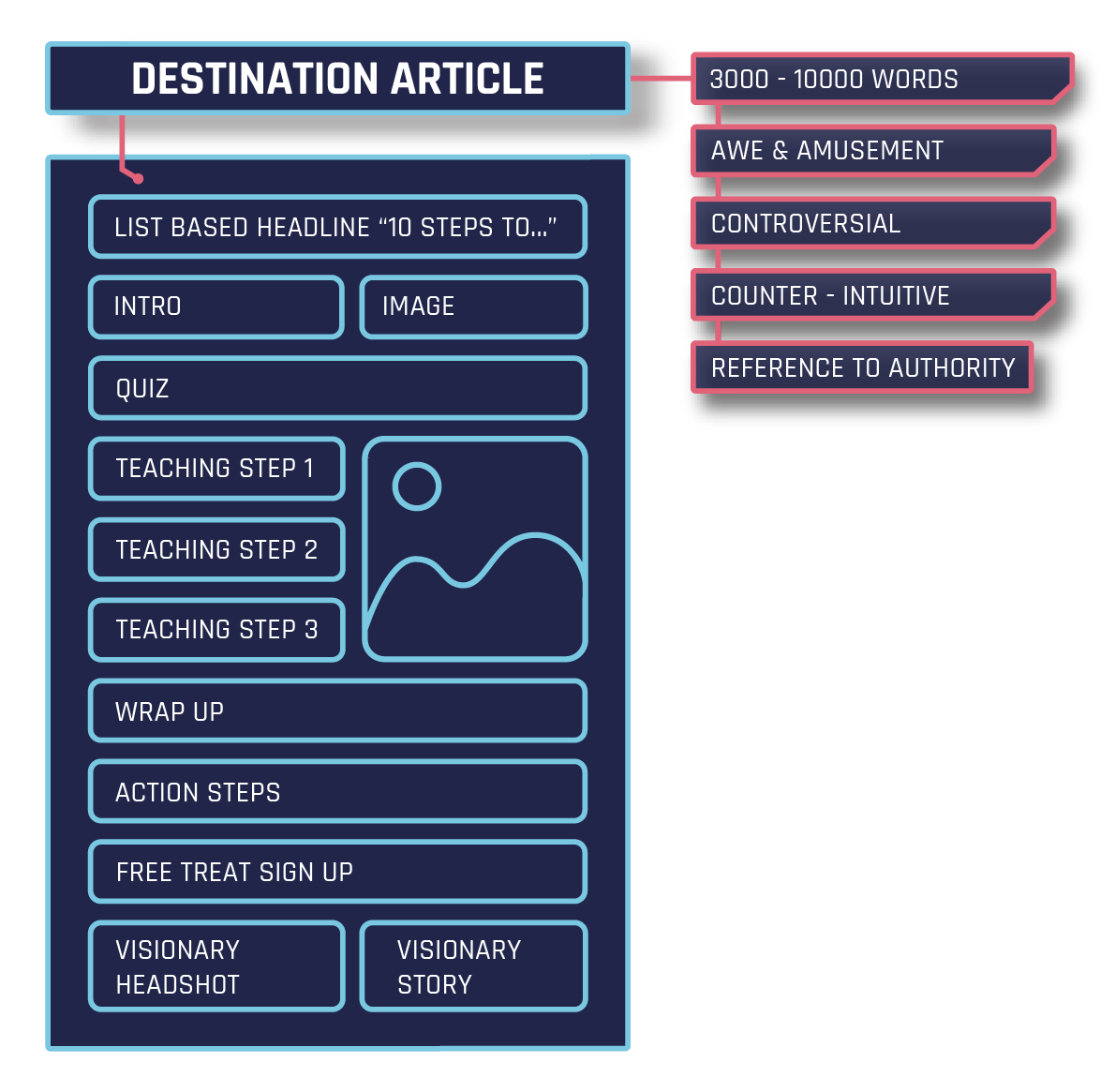 Article Length
Article Length
A Destination Article should be at least 2500 words long. The most shared Articles on Facebook tend to be 3000-10000 words long.
So the more comprehensive and informative your Destination Articles are the better!
A good test for this is to ask yourself, "Would my Audience pay for this info?" If the answer is ‘yes’ then you’ve got a great Destination Article!
Images
These articles should also have images. This is because people get intimidated when they see a massive block of text. Images are a great way to break up the space and keep the reader engaged.
Incite Emotions
You’ll also want to incite Emotions.
The Emotions that cause content to be shared the most are awe and amusement.
That means you’ll want the content to be so amazing your Audience is in awe at the quality of the info, and also that you’re offering it up for free. You’ll want it to be amusing and not take itself too seriously so it’s a fun read. If you write a Destination Article that reads like a term paper or scientific essay then your Audience will quickly lose interest.
Pimp It Out
Typically articles with quizzes and Infographics get shared more than others. This is because adding these elements elevates content over what everyone else is doing.
Any old fool can write a blog post, but it takes a lot of extra thought to ‘pimp it out’ with custom quizzes and graphics.
Lists
Audiences love to have complex information broken down into simple steps they can follow. For that reason having your Destination Article be comprised of a list (like the 7 Blocks of producing your Brand) makes it easier for Audiences to digest.
Be Transparent
Audiences love honesty. They want you to be no B.S. and tell it like it is.
That means you can go against conventional wisdom and make your stuff slightly controversial or counter-intuitive. For example, here at the Visionary Planner we go against conventional marketing wisdom by explaining how complex it is to build a Brand. Most businesses think their Audience will be scared off from doing hard work. But we only want to attract an Audience who are serious about producing their Brand. That means we feel it's our duty to ‘say it like it is’.
Your Destination Article should also include your image and bio in the Author Box (we call these your Visionary Headshot and Visionary Story). This lets the reader know who wrote the Article. Besides, giving yourself credit for the writing you’ve done will only further establish your Authority.
Be Generous
The most well-respected Authorities in the world constantly cite their references and ‘spread the love’. For example, a lot of what we’re revealing about Destination Articles we learned from the okdork.com site. Be sure to check them out!
You should include quotes, references and citations from other respected sources in order to make yourself look more legit.
Not only that, it shows you’re open and generous. These are qualities most people are seeking out in their Thought Leaders!
Not going to lie…it takes a bit of effort to write 3 amazing Destination Articles that deliver outstanding value to your Audience. But once you have them done they become the foundation for all your teachings.
2) Free Treats
A complimentary piece of content a Brand offers its Audience in exchange for their contact information. A Treat should Educate and Entertain and give a sample of how a Brand can positively affect the lives of its Audience.
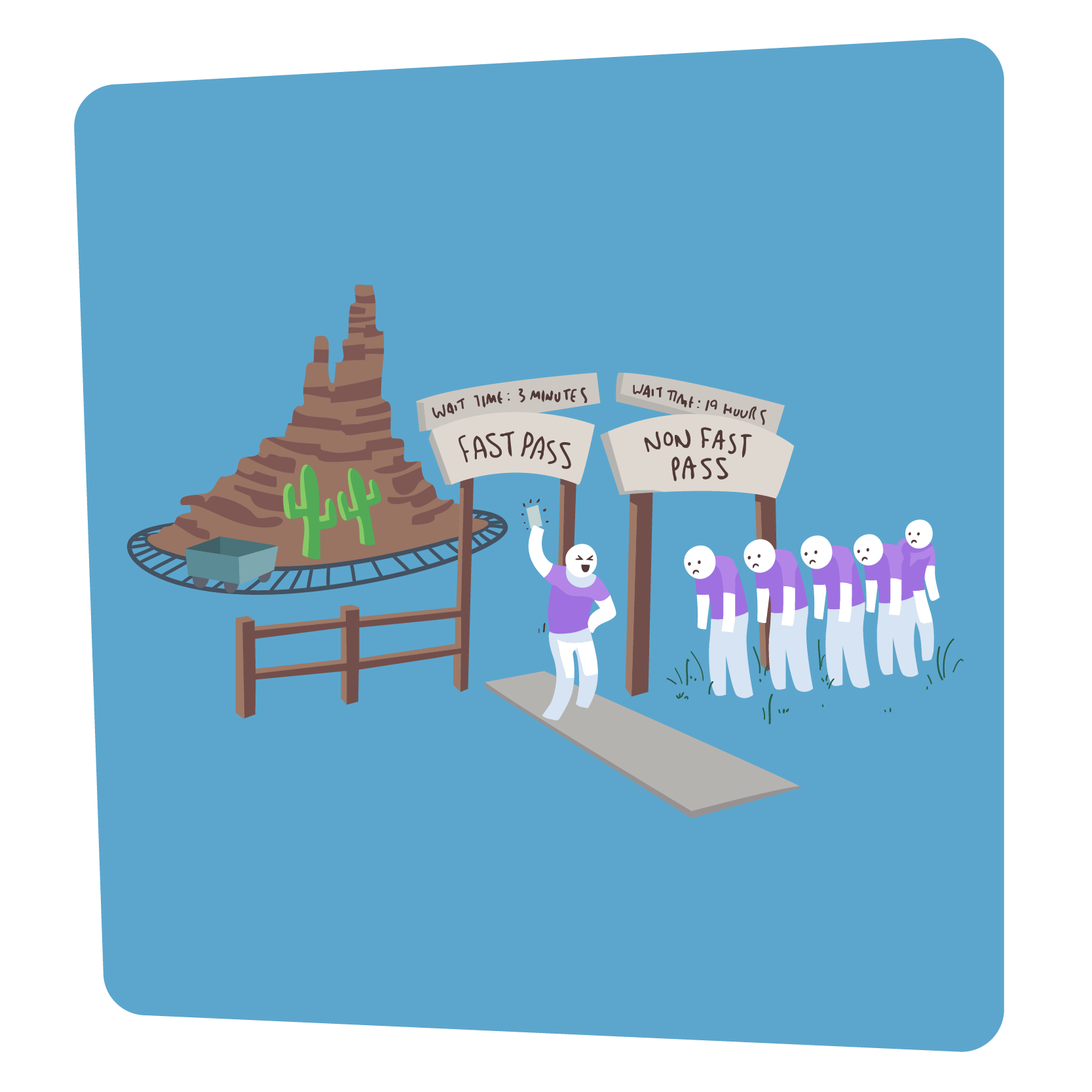 Chances are, after entering Disneyland, you’ll notice that the most popular rides have very long lines. Like HOURS long.
Chances are, after entering Disneyland, you’ll notice that the most popular rides have very long lines. Like HOURS long.
Since time is money, most people get a little cranky at the long lines.
Disneyland knows their popular rides are popular because they’re amazing. You go on them and then can’t wait to tell everyone you know about how they must Experience them too!
For this reason Disney needs to make sure its Audience all Experience these memorable rides.
What do they do to assure their Audience return later and go on the ride? They offer their Fast Pass System. This system lets you claim a ticket with a time printed on it. You can then return to a ride at that specified time and skip the line.
So what’s the same principle with an online Brand?
Before I reveal what it is, let’s make sure you understand the goal of any Brand. That’s to grow its Audience List.
This is because having the contact info (email, phone or address) of an Audience lets a Brand stay in touch with them. The more a Brand is forefront and present in their lives the higher the likelihood they’ll buy that Brand’s Treasures (your products and services). And ultimately, a Brand needs to generate revenue in order to survive.
But your Audience isn’t going to magically surrender their emails…
You need to entice them!
If your Audience is on your Website or Social Media Channels there is no guarantee they’ll return. Chances are, unless they totally fall in love with your Brand, or buy a Treasure that requires them to return… they won’t.
They’ll get distracted by something and split forever. The odds are stacked against you!
So how did Marketers solve this problem?
They devised to give out something of valuable in exchange for their Audience’s email. In the early days of online Marketing this consisted of giving out massive eBooks or 30 day email courses.
The problem with stuffing an Audience with too much content is they get overwhelmed.
Would you rather skim through a colorful brochure that gives you the ‘big picture’ of something, or dive into an 87 page manual?
Chances are you might be excited for the massive eBook or 30 Day Email Course, but because you didn’t invest any money to get it, it’s meaningless to you. For example, if I walked up and gave you a brand new Tesla car you’d probably think it was cool but start to lose interest. You wouldn’t treat it with the same respect that you would if you worked your ass off for three years saving up money and really earning that car.
Giving something out for free that is too big and too encompassing will only turn your Audience off.
They want easy and breezy. They want a sample. They want a simple overview.
For this reason your Brand needs to offer a Free Treat that entices your Audience to give you their email.
Based off data, the #1 thing that people prefer to get for free online are PDFs. Sure you can give away a video, but what if that person is at work and the boss is one cubicle over? A PDF is something they can discreetly access and save for later. (But since some people prefer videos we show our students of the Visionary Planner trainings how to layer videos into their Free Treats for added impact!)
You should think of this as a ‘sample’ of what your Brand can offer. Your Free Treat has got to be good enough that someone would have been happy to pay for it. It’s also got to be easy and quick to consume. If they can’t get through it in seven minutes or less your Free Treat won’t be doing its job.
What is its job?
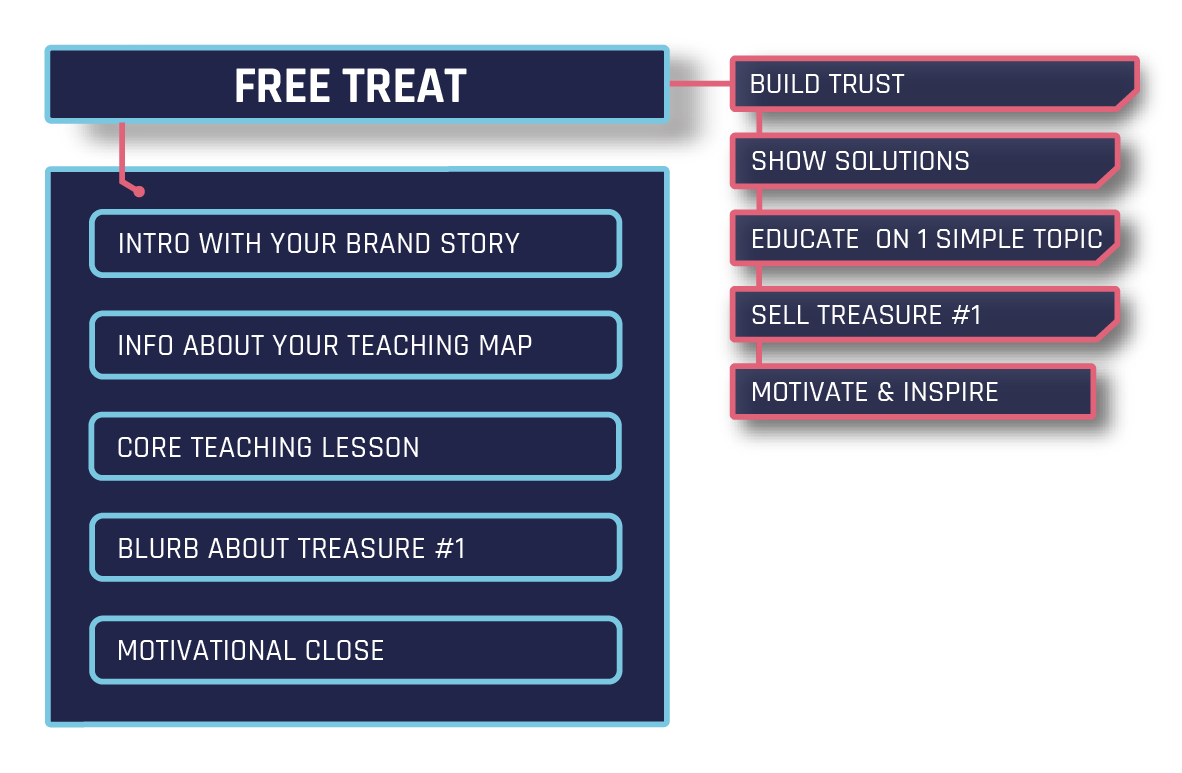 To Educate and Entertain your Audience on how your Brand can help them.
To Educate and Entertain your Audience on how your Brand can help them.
It’s meant to be a sample that lets them Experience your Brand, and lets them know about your Treasures.
It’s no different than having to walk to the entrance of a ride at Disneyland to get your Fast Pass ticket. You’re close enough to the ride to hear the delights of the Guests riding it. This proximity, coupled with you having a ticket to return a few hours later, builds anticipation and makes going on the ride that much more satisfying.
A great Free Treat should follow this structure:
- Intro with your Brand Story so your Audience can know, like and trust you.
- Info about your Teaching Map so your Audience understands the core solutions your Brand can help them with.
- Core Teaching Lesson that quickly Educates your Audience on how to solve a simple problem.
- Blurb about Treasure #1 that mentions your lower priced Treasure. This includes a link so they can get more info.
- Motivational Close that inspires your Audience to take action on the Core Teaching lesson they just learned.
Free Treats should be highly visual with lots of images and big font. It should be a delight to consume, in the same way a magazine is.
If you don’t offer up a compelling Free Treat then you’ll always struggle to grow your Audience List!
3) Treasure #1
The lowest priced Treasure. The objective of a Treasure #1 is to offer a ‘first step’ solution that helps solve a common problem for a Brand’s Audience.
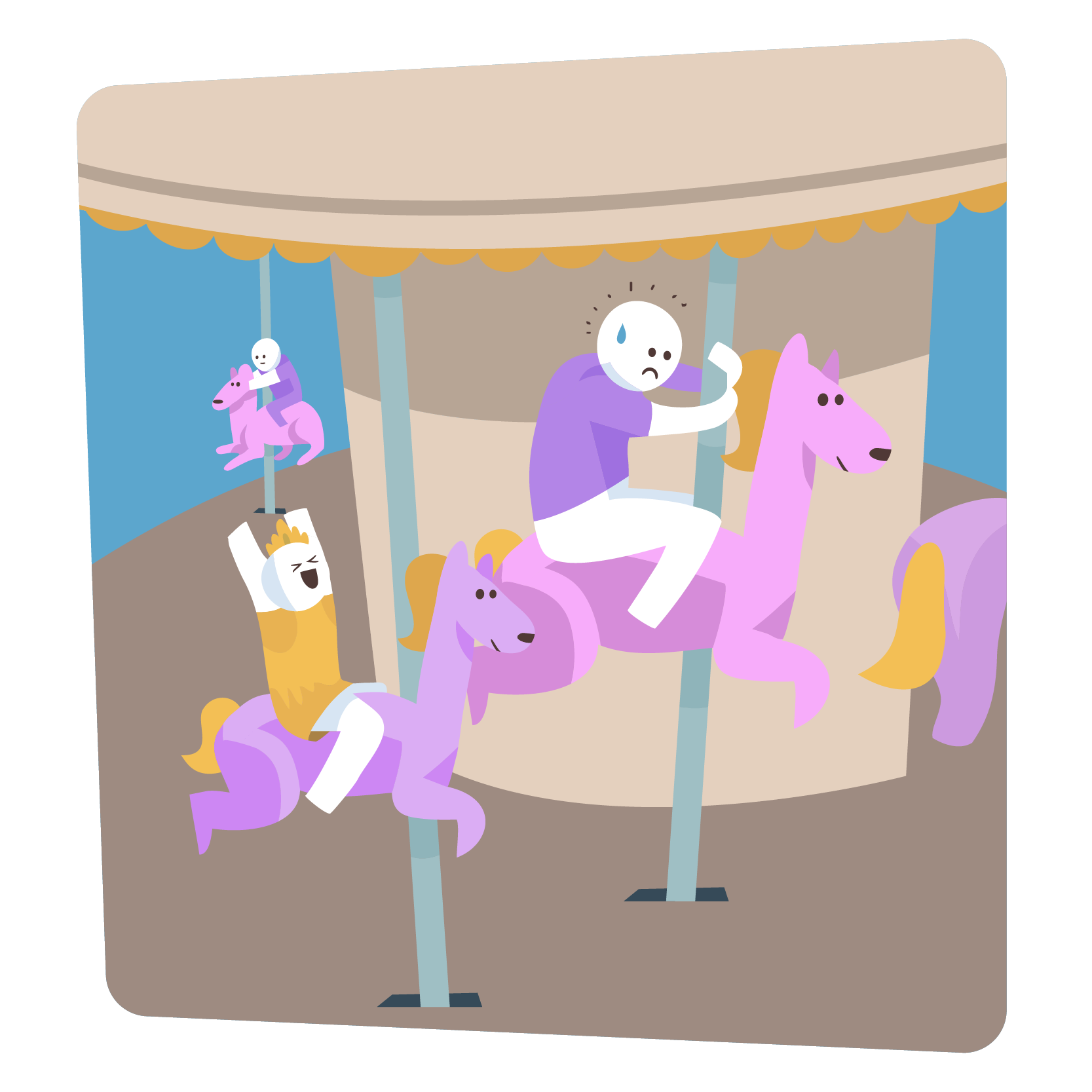 Disneyland has different levels of rides.
Disneyland has different levels of rides.
In the old days they’d issue tickets. The more grandiose the ride, the more tickets it cost to go on. For this reason an A-ticket was for rides at the low end of the thrill spectrum, such as walking through the castle or riding the carousel. The E-ticket rides were the blockbusters of Disneyland! These included Pirates of the Caribbean, the Haunted Mansion and Matterhorn Bobsleds.
Every Brand has different levels of products or services. We call these Treasures because you should have the mindset that they are Treasures for your Audience to discover and cherish. This means you should make them the highest quality and infuse them with love.
As John Lasseter, co-founder of Pixar says:
“Quality is the best business plan.”
Let’s look at Apple for moment. Just like Disneyland has different levels of rides, Apple has different levels of products at different price points.
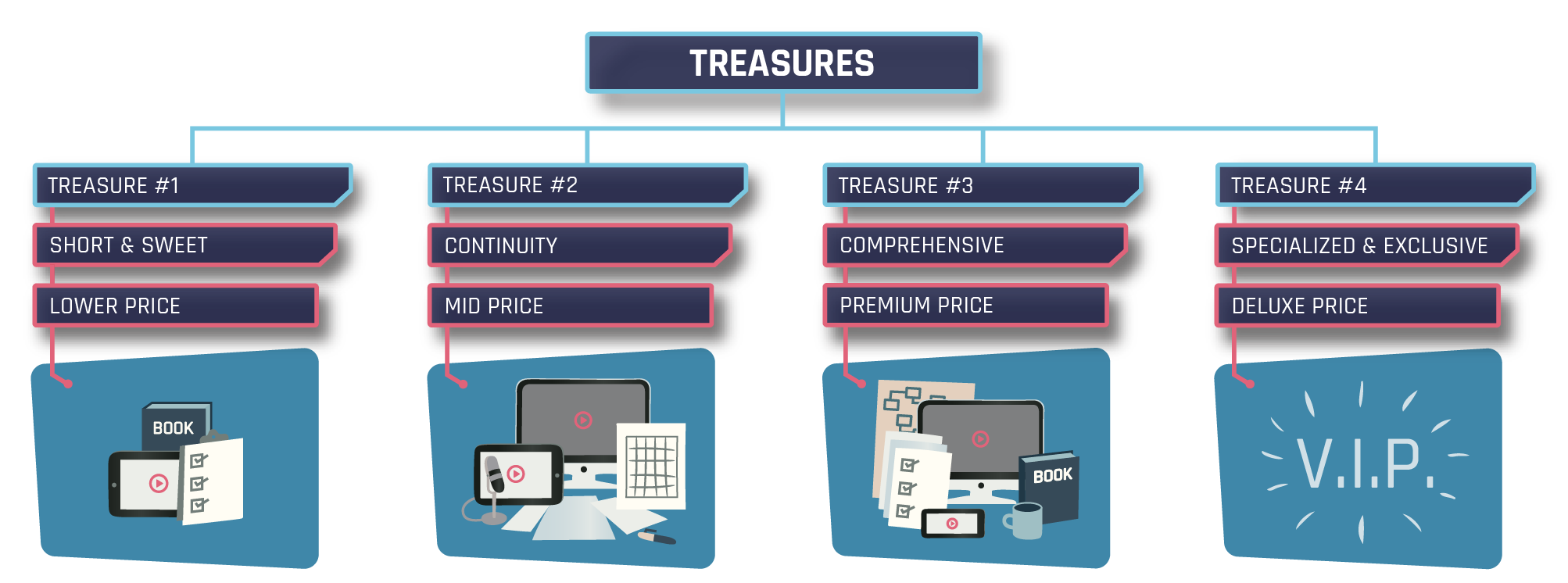
- iPods: $49-399
- iPhones: $399-$749
- iPads: $599-$799
- iMacs: $999-1999
As you can see, the price of each Product scales up. That means Apple is hoping to hook you with a $49 iPod. Assuming you love it, you might eventually (like me) scale up and buy the $500 iPhone, $700 iPad and a few $2000 iMacs.
Your Brand needs to have Treasures that scale up in price and complexity. Knowing your Audience makes planning your Treasures very simple.
We break Treasures into 4 categories:
Treasure #1
This is a lower priced, low complexity product. For Apple this is the $49 iPod. They make these cute and colorful for a reason! They’re meant to be an impulse buy that allows Apple to get their Audience’s contact data (email, physical address and phone).
For an online Brand, you’ll need a low priced ‘impulse’ offer that gives your Audience a compelling reason to buy from you. When they buy you can then place them on your Guest List (a Guest is anyone who buys one of your Treasures). It is far easier to sell your other Treasures to a Guest who has bought a Treasure #1. Plus the money generated from the Treasure #1 typically covers the costs of your running Ads in order to grow your Audience List.
A Treasure #1 can be a short training, a magazine, an appetizer, a $1 software trial, a free book that the Audience pays for shipping costs, etc.
Students in our Visionary Planner Training get access to our Treasure #1 template so they can easily create their Treasure #1 with minimal overwhelm and start generating revenue as soon as possible.
Treasure #2
This is any type of lower priced continuity program. Examples of this are Netflix, Lynda and Amazon Prime. Of course this doesn't have to be ‘lower priced’. An auto leasing company loans out cars with monthly payments. Depending on the car, this monthly payment might not be so low!
Treasure #3
This is your higher priced products. For Apple it’s their Ipads, iPhones and iMacs. You can have multiple Treasure #3's. We’ll talk about Treasure #3 in Part 3 of this article series.
Treasure #4
This is any Treasure that consumes a lot of time and energy on behalf of the Visionary and their Team. Examples of this are one-on-one consulting, live events, workshops or done-for-you services. We’ll talk about Treasure #4 in Part 3 of this article series.
Treasure #1 Must Haves
Treasure #1’s should be fun and easy to consume and deliver a clear benefit that is fairly easy to solve.
For example, the Treasure #1's for the Visionary Planner Brand is our Clarity Planner Trainings.
We have 4 of them, and each are very specific to giving students clarity on a particular Desire within the Visionary Planner. These include planning a Brand’s Story, planning a Brand’s Branding strategy (name, tagline, logo), planning a Site and planning a Social Media strategy.
They all take less than 4 hours to get through with the specific goal that students get to Map out their action steps before they go into production for their Story, Brand, Site or Social Media.
For your Brand you must ask, “What is the most common entry-level problems that I know my Audience wants to solve?”.
Maybe your Brand doesn’t solve problems and sell info. Maybe you’re more in the Entertainment niche like artists, musicians and craftspeople.
If so, then what lower priced version of your Entertaining product can you offer up that will lead to a higher priced sale? For example, if you’re selling your music, your Treasure #1 could be a song you sell for .99 cents in the hopes your Audience goes on to buy your full album.
You need to plan out what your Treasures are in the Visualize Phase of the Visionary Loop. This will help you make sure each of your Treasures logically lead your Audience along a clear path and buying higher priced Treasures along the way.
If we swing this back around to Disneyland, after you ride the trolley or carousel (their Treasure #1's) you’d be much more willing to ride their more thrilling rides.
4) Social Media Channels
Social Sites and Apps that create a series of communities for a Visionary and their Audience to stay engaged and excited about the Brand.
 Disneyland has multiple Character Meet & Greets where fans can meet their favorite Disney Character and interact with each other based off their interests.
Disneyland has multiple Character Meet & Greets where fans can meet their favorite Disney Character and interact with each other based off their interests.
For example, little girls can meet their favorite Princess and get a coveted photo.
Little boys can hang out with Jack Sparrow and the rest of the Pirates as they learn how to sword fight.
Disneyland even has special events such as the Food and Wine Festival, Swing Dancing Sundays or Season of the Force where fans of wine, dancing and Jabba the Hutt can all geek out together.
In short, Disneyland creates mini-communities that allow fans to connect.
They supply these fans with content in order to get the conversation rolling, but then quickly get out of the way so the fans can socialize.
A Brand does this by using Social Media Channels.
There are dozens of popular Social Media Channels, and like Myspace, some may not be around forever! But the fans don’t go anywhere. They just jump to another Channel. For this reason Social Media is a never ending river of change that every Brand must stay aware of.
Often ‘early adopters’ to a new Channel are able to establish themselves and become a titan on that Channel. Just look at YouTube Channels that have millions of fans! Typically each fan of a Channel is worth $1 each year. Not bad for making a video once a week.
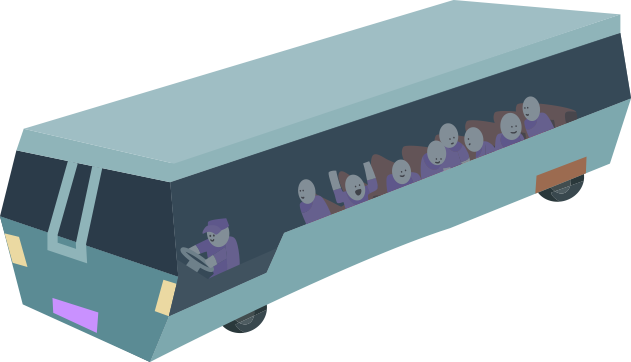 Each Channel has its own strengths and weaknesses.
Each Channel has its own strengths and weaknesses.
Each Channel requires a different amount of time and energy to manage. And each Channel hosts a unique sub-set of your Audience. For example, those that like Video will most likely engage with your Brand on YouTube. Those that like pretty images will surely engage on Pinterest. Your job is to be everywhere your Audience wants you to be.
A Social Media Channel should drive an Audience to your Visionary Site (and signup pages). It does this by using a mixture of Ads and Episodes. These are like the buses, trams and ferries that deliver Guests to Disneyland. More on this later…
5) Path Assets
An asset contained within an Audience Path. Assets consist of forms, content (video, graphic and written), email messages and web pages.
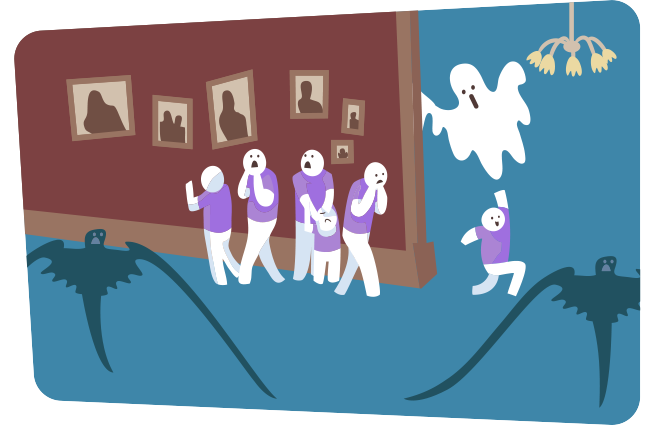 The Treasures at Disneyland are the rides. Disneyland’s goal is to get their Audience to Experience as many rides as possible. On most days, Guests can’t run onto a ride. They have to wait in line. Waiting in line builds anticipation (or, if you’re my Uncle Larry it just pisses you off).
The Treasures at Disneyland are the rides. Disneyland’s goal is to get their Audience to Experience as many rides as possible. On most days, Guests can’t run onto a ride. They have to wait in line. Waiting in line builds anticipation (or, if you’re my Uncle Larry it just pisses you off).
In order to build up the anticipation and excitement the lines at Disneyland are exceptionally well planned out.
They feature interesting architecture and landscaping. They have interactive displays that help keep Guests engaged. They even have water fountains, trash cans and nearby restrooms so Guests can always be comfortable.
In short, the lines help contribute to the Experience of the ride.
For an online Brand, we call the lines the Audience has to travel through the Audience Path. This is how your Audience goes from first Experiencing your Brand to eventually buying one (or more) of your Treasures.
That means you must plan out each of their steps, which are often known as touch points. These are all the points where your Audience ‘touches’ or makes contact with your Brand. You must make sure these steps feature something of value that either Educates or Entertains your Audience.
For an online Brand, chances are most Audience Members are not going to simply visit the Brand’s Site and buy a Treasure. They’re going to need some nurturing… They’re going to need to a little anticipation and excitement to build up…
That means your Brand needs to plan out the Audience Path.
Each step of the way you’ll need to create content, which we call Path Assets. These Assets come in many mediums including videos, PDFs, text and graphics that create an Experience that leads your Audience down a particular Path and towards your Treasures. Just like a line for a ride!
Students of our Visionary Planner trainings get a comprehensive Map that clearly shows each Path Asset that needs to be produced. These are all based off best practices. They also get step-by-step Production instructions and templates to build them.
So what are some of these Path Assets? 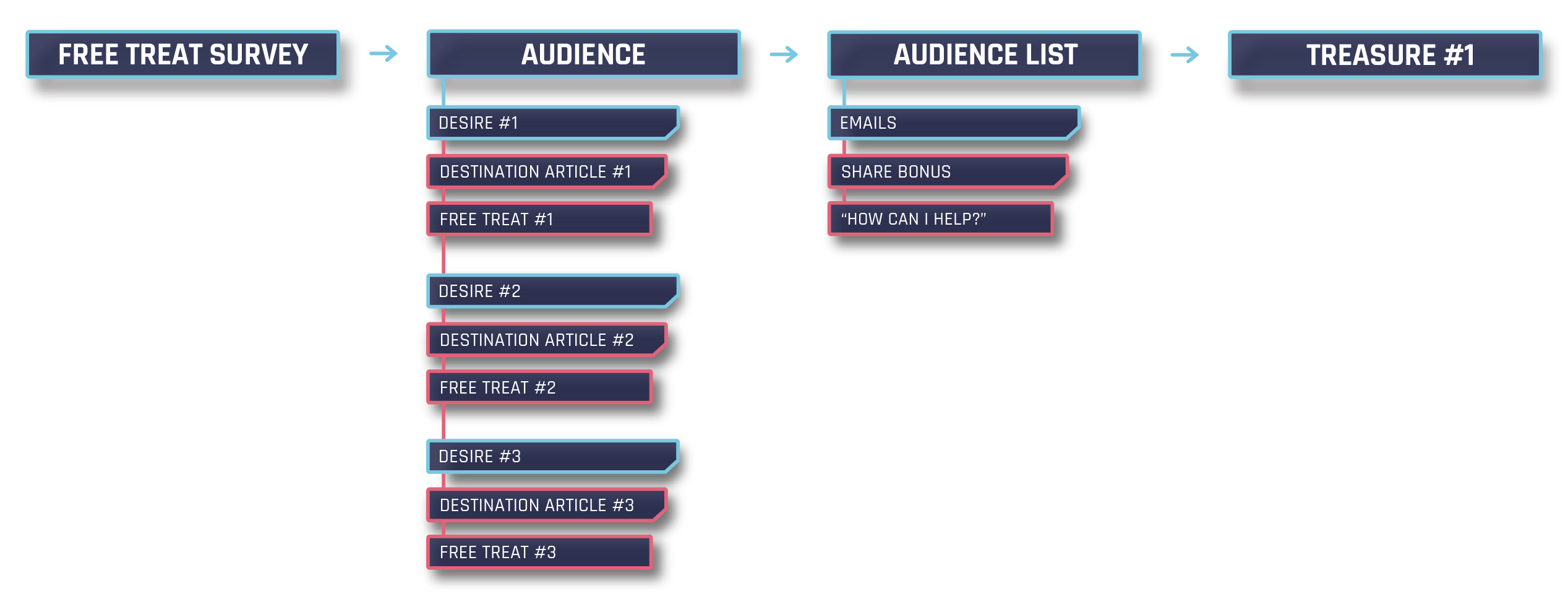
There is an interactive Free Treat Survey to determine which of your Free Treats is best for each member of your Audience. This is based off the principle that Audiences love quizzes because we love to have personalized help. It makes us feel important.
There’s a Share Bonus that encourages your Audience to share your Brand in exchange for a PDF. This is the same strategy that big Brands like Dropbox used to rapidly grow without having to spend extra money on Ads.
There’s even a ‘How Can I Help?’ Survey near the end of the path for everyone in your Audience that didn’t buy your Treasure #1. This asks them what about your offer didn’t compel them. Armed with this info you can improve your Audience Path and Treasure #1 sales messaging. In exchange for this info you give your Audience another PDF as a bonus.
Basically, you need to plan out the entire Audience Path and create Assets to hold your Audience’s attention as they walk down that path. You can only win your Audience over by showing them you respect their time and are devoted to delivering massive value. You do this whether they buy your Treasures or not!
6) Path Tools
Software that allows a Brand to deliver a carefully planned Audience Experience in an automated way.
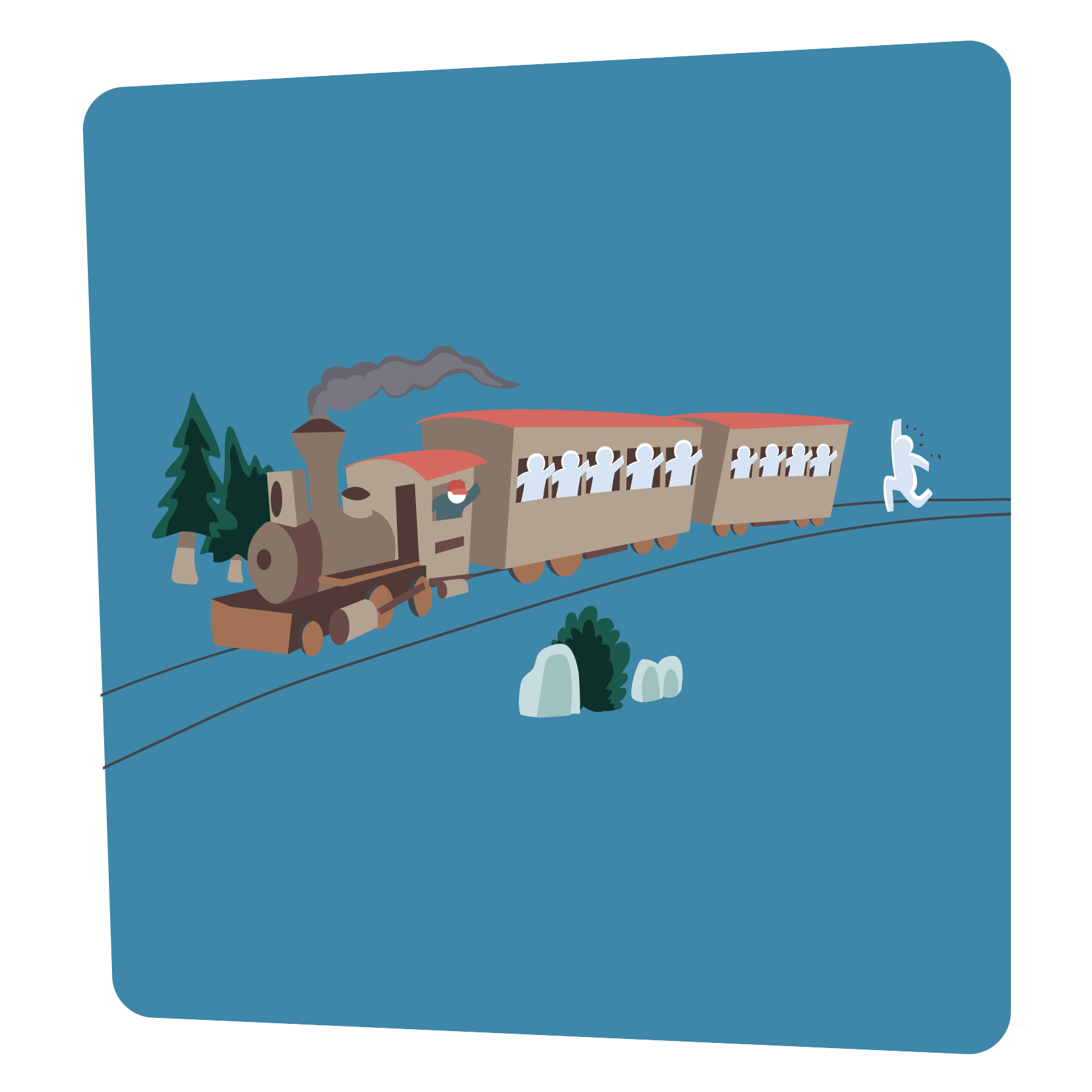 Let’s assume you just bought a ticket to Disneyland. You’ve just stepped though the front gates. What is the first thing you see? The train station! The Disneyland Railroad transports Guests all around the park. It lets them hop on and they quickly get transported to their favorite land where they can go on their favorite ride.
Let’s assume you just bought a ticket to Disneyland. You’ve just stepped though the front gates. What is the first thing you see? The train station! The Disneyland Railroad transports Guests all around the park. It lets them hop on and they quickly get transported to their favorite land where they can go on their favorite ride.
Just like Disneyland, your Brand needs a way to easily transport your Audience around. That means once someone enters your ticket booth (when they give you their email or contact info) you need to get them on your train and take them on a tour! Your tour consists of sending them messages. 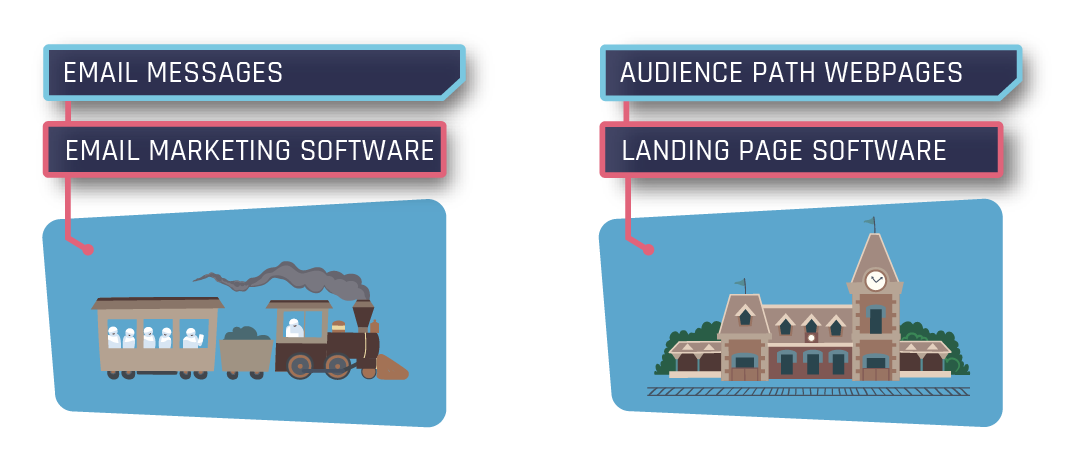
This typically happens online with the use of Email Marketing Software.
Often this is called ‘Autoresponder’ software because it lets you set up emails that automatically respond to your Audience.
Yep, you can plan out all the messages you’d ever want to send out and automate them to be released. If you had to do this manually it would be a full time job that would drive you nuts!
There are other ways to transport your Audience around your Brand. These include push notifications, direct mailings (like postcards), phone calls and SMS messages.
If the messages you send out are like a Train, you’ll need a Train Station for your Audience to disembark at. Online, your Audience Path Webpages act as your Stations.
Each message sends your Audience to a particular webpage. These webpages have particular info on them that logically progresses your Audience’s journey along their pre-defined Path.
These pages are built in Funnel or Landing Page software. These Software's let you rapidly create pages without hiring a coder or programmer. When I built my first Brand in 2011 software like this didn’t exist! I had to use wanky themes or hire expensive programmers. Fortunately technology has made the life of a Visionary much easier!
All Audience Paths need to have 5 main elements in order to generate revenue for the Visionary who owns a Brand.

- Drive - Your Brand must have ways to ‘drive’ your Audience over to your Brand. This can be Social Media posts, Ads or word of mouth. This is where your Brand Story and Visual Branding must be very clear and recognizable. This allows you to be remembered and lets you start to stack up all the times someone in your Audience hears about you. The more times they hear about you, the more comfortable and curious they become. This curiosity should lead them to…
- Sign up - In order to start to really tell your Brand Story you should get your Audience’s email or contact info. In exchange for their precious contact info your Brand needs to offer them a Free Treat. A Free Treat is a ‘sample’ of all the greatness your Brand provides. It should Educate and Entertain them about your Treasures (your products and services).
- Welcome - After a member of your Audience signs up for one of your Free Treats, they should be greeted by a welcome message. This message asks them to check their inbox to confirm the email they gave you is correct. This is important because you don’t want to give someone something of value if they gave you a false email address. Once they confirm their email address they go to...
- Access - This is where they can access the Free Treat you promised them. This Free Treat should gently Educate them about your Treasures so they can buy your stuff! After all, your Brand needs revenue in order to survive.
- Treasures - If you properly told your Brand Story, and clearly demonstrated your value, then a decent amount of your Audience will purchase your Treasures. The good news is, if they buy one Treasure, and they relate to your Brand, they’re highly likely to keep buying more Treasures.
If you want to get some clarity on how to plan out your Brand’s Audience Path (so you can then build it in your Audience Path Software), check out our free Masterclass on how to design an amazing Audience Experience that leads your Audience through your Audience Path.
7) Visionary Site
A website that serves as a greeting area and content hub for a Brand’s Audience. This site hosts the Brand’s written Episodes with the objective to Path the Audience towards accessing a Free Treat. The site is a way to learn about the Visionary and the Brand.
Disneyland has an Entrance Plaza. This plaza has a large foyer its Audience can gather before they enter the park…
- If they have a ticket, this is where they can enter the park through the Turnstile. Just like if someone has bought one of your Treasures.
- If they want to buy tickets, this is where the ticket booth is. Just like if they were exchanging their email for entrance to your Brand.
- If they have questions, this is where they can talk to Team Members. Just like if they were accessing your Contact Form or Chat box.
Think of your Brand’s website (we call this a Visionary Site) as a ‘hub’ that links up every aspect of your Brand.
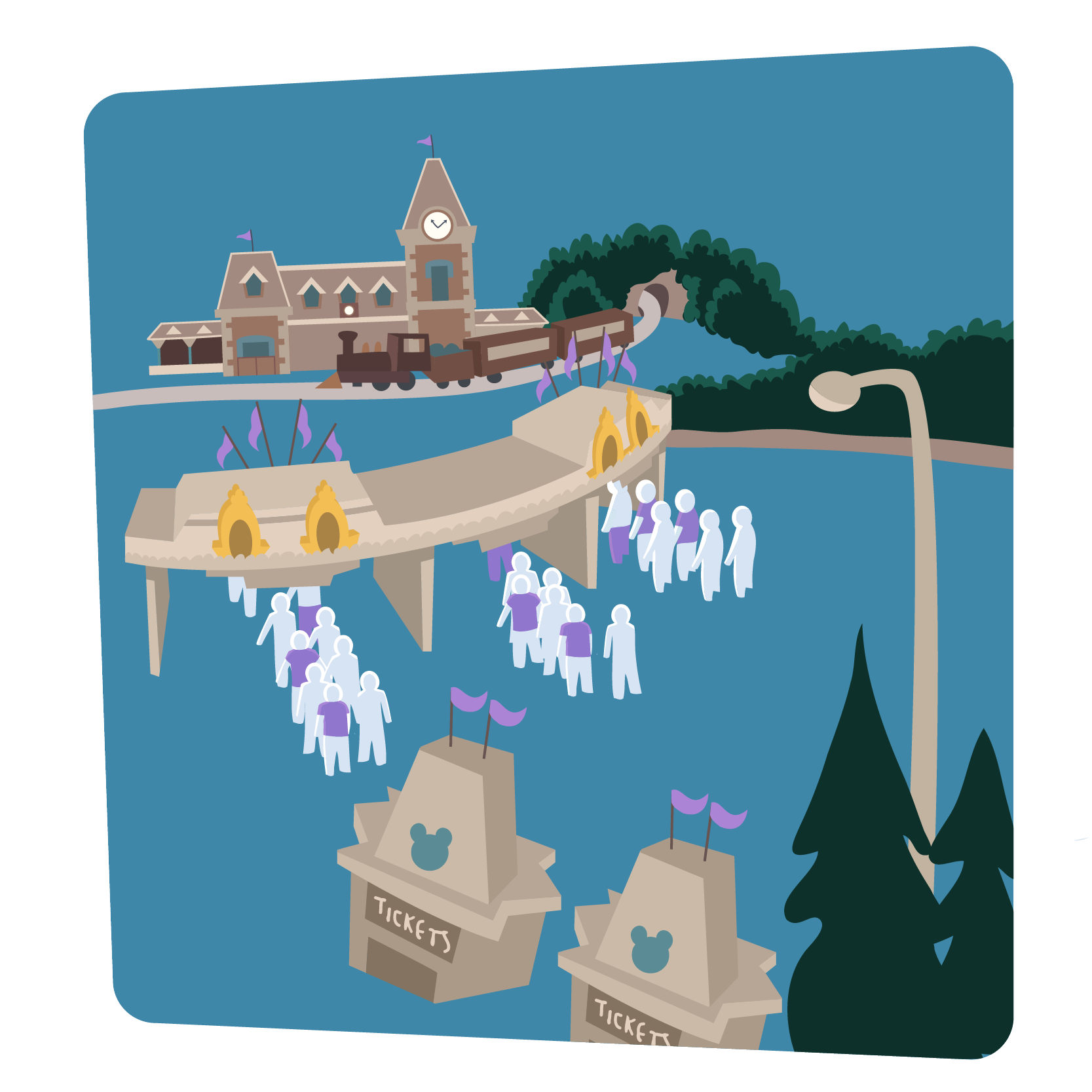 Your Social Media Channels link here. Your Audience can buy your Treasures here. They can access your Treasures here. They can contact you here. In short, it’s the basis for all interactions they’ll have with you.
Your Social Media Channels link here. Your Audience can buy your Treasures here. They can access your Treasures here. They can contact you here. In short, it’s the basis for all interactions they’ll have with you.
There are good websites, and there are awful ones!
A good site makes it very easy for its Audience to find their way around.
The Entrance Plaza to Disneyland is good because the Ticket Booths, Turnstiles and Team Members are all very easy to locate. Imagine if these things were hidden away behind dense foliage, or cluttered up with confusing signs and kiosks?
A bad site is a disaster to navigate.
There are way too many navigation buttons. There is way too much text. Everything is cluttered and screaming out for attention.
On top of that, bad sites don’t clearly communicate the Brand Story. Who is this Brand for? What types of Treasures do they sell? How can an Audience easily buy Treasures and sign up for a Free Treat?
If your site is a mess, it’s not your fault. Most sites lack any sort of elegant design or Brand Strategy.
When I was first starting to build the Visionary Planner, the #1 thing most people wanted was a website. That’s because a site is tangible. You can see it. But a site is just the tip of the iceburg…
What is more important is the structure that hides out of the Audience’s view.
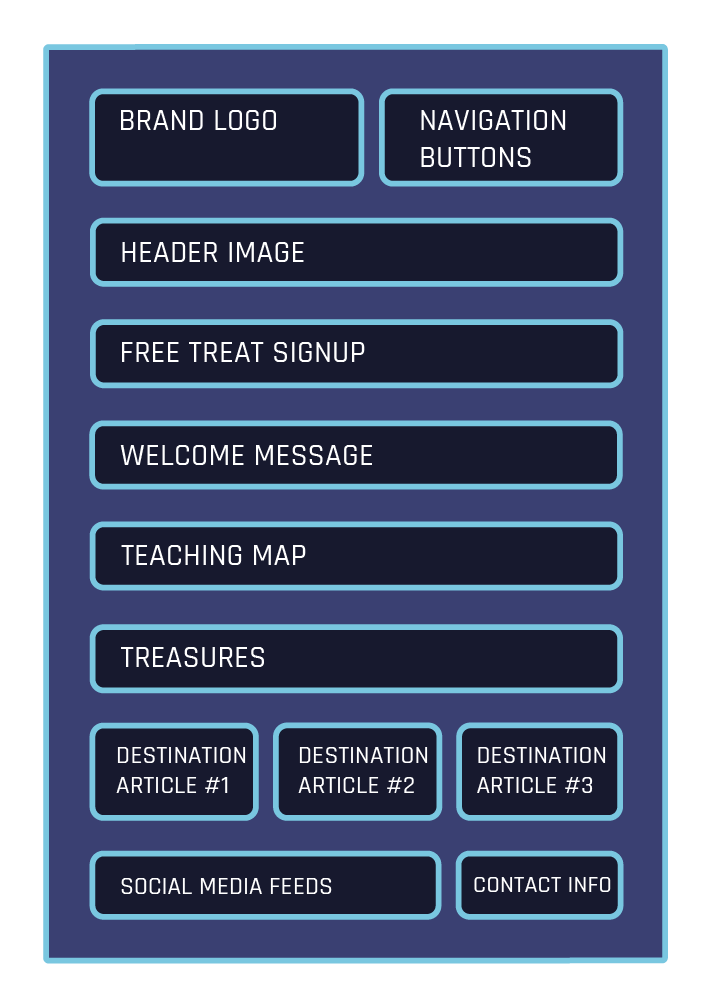 Our early Visionary Planner clients hired me to build them a website. After I built their Site it just sat there. Why? Because there was no Audience Path designed to support the Site. There was no strategy to drive an Audience to the Site in order to get on their Audience List. And there was no Path Assets or Treasures to engage the Audience once they were on the list!
Our early Visionary Planner clients hired me to build them a website. After I built their Site it just sat there. Why? Because there was no Audience Path designed to support the Site. There was no strategy to drive an Audience to the Site in order to get on their Audience List. And there was no Path Assets or Treasures to engage the Audience once they were on the list!
So many business owners want to get a site up and running, but that site won’t make you any money if all the other parts of the Visionary Park Map aren’t planned out…
Imagine if Disneyland was only an Entrance Plaza! There’d be nothing to do, and no way for Disneyland to make money.
That means you should only consider building your Visionary Site, or re-branding it, once you have completed all the other blocks of the Visionary Experience Map in order.
A great Visionary Site should put most of its focus on its Homepage, followed by its Blog.
The homepage is important because that’s where everyone who is aware of your Brand will land first.
Why here?
Because if they’re Googling your Brand’s Name, chances are Google will serve up your Homepage as the first page they should visit.
That means you’ll want to have all of your most critical info here to greet your Audience.
This includes:
- Your Brand’s Logo so your Audience knows they’re in the right spot.
- Navigation Buttons so your Audience can find their way around your site.
- A header image that clearly shows what type of niche your Brand is in.
- A welcome message that clearly states how your Brand can help its Audience.
- Your Teaching Map so your Audience can see a visual representation of the journey you can help them go on.
- Your Treasures so your Audience doesn’t have to hunt around to give you money!
- Your Destination Articles so your Audience can get a sample of the quality of your content.
- Your Social Media Feeds so your Audience can see your Brand is staying fresh and relevant (and that a lot of other people like your Brand!)
- Your Contact Info so your Audience can easily reach out to you.
Oh yeah..I almost forgot the most important aspect of all… If a Brand’s primary goal is to grow its Audience List, what might you also want to prominently display on your Brand’s Site?
If you said ‘a way to sign up for my Free Treat’ then you are correct!
You’ll want to offer multiple ways your Audience can sign up for your 3 Free Treats. We like to have ‘Get Started’ buttons, an embedded ‘survey’ and an exit image that triggers if someone leaves your Site without signing up for your Free Treat.
Again, Sites are very complex to plan out, so if you want to see our exact formula, and get a comprehensive overview, then access your Site Clarity Map by clicking the button above.
It comes with a Map, several training videos and a substantial discount on our Site Clarity Planner training. Plus you can also check out our Audience Path and get some ideas for how to build yours!
Wrap Up
You just discovered the 7 Blocks that make up the Produce Phase of the Visionary Loop! You now should have some clarity on how you should plan your Brand and site out. Everything you do should contribute to designing the best Audience Experience you can. After all, the success of your Brand is directly linked with how much your Audience enjoys it.
Let’s recap what you just learned:
- How to use a proven system for building a Visionary Site using industry best practices.
- What a Destination Article is (like this one) and why you need them.
- The best types of Free Treats and how to use them to grow your Audience.
- What the best ‘attractions’ you can put inside your Audience Path are and why they’ll make your Audience happy.
- What elements it takes to create a great Website that engages your Audience and makes it easy for them to get the info they Desire.
The next phase, Educate & Entertain, is where you’ll Premiere your Brand and share its glory with the world! That involves several Blocks we’ll explain in Part 3 of this trilogy of articles.
Step #3 - Read Part 2
Don’t regret not taking action today! Make your Vision happen now. We’re doing it, and so can you.
Ready for Part 3? Check it out now.
*All trademarks used are the properties of their respective trademark owners.
Unlock Our Brand Vault (Free)
Get instant access to the 10 brand tools we use with our $4,200 clients. These frameworks have helped B2B leaders land premium clients, get featured on top podcasts, and clarify messaging that converts, without overhauling their website.
We hate SPAM. We will never sell your information, for any reason.


